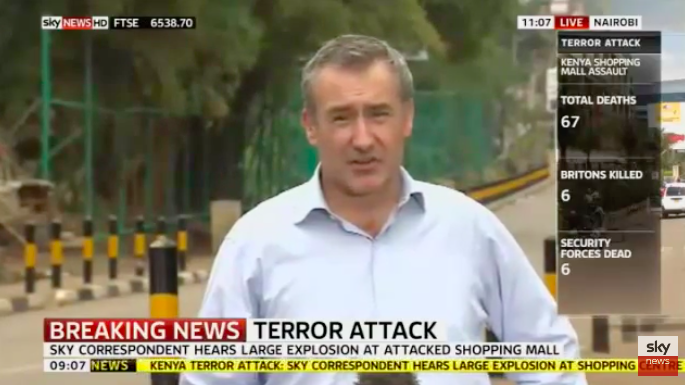Perhaps you remember footage of the wave. It was mostly from traffic cameras, mute but darkly mesmerising. Millions of gallons of Pacific seawater upended by a 9.0 earthquake and hurled irresistibly inland. A few days later I saw what that meant, turning a corner in my hire-car to find the road blocked by a trawler that had been washed ashore.
This week, Japan has commemorated the tenth anniversary of the tsunami which killed 15,000 of its people. A seismic tragedy which begat a man-made disaster. Inundated by water, part of the Fukushima nuclear reactor blew up, producing the worst radioactive leak since Chernobyl.
It wasn’t long before scores of foreign journalists flew into Tokyo, with a brief to get to the worst affected areas. I was one of them, unprepared for the after-shocks, but ready for the radiation. I was equipped with a Geiger counter to warn me and my camera team of any invisible dangers.
The machine didn’t work, but the fact we had one at all was an important punctuation mark in a story of journalistic risk management. A story, which for me at least, began ten years earlier with another mass casualty catastrophe. An event of history-shaping significance that will also be remembered this year: the 20th anniversary of the 9/11 attacks.
What followed at times felt a like a tragic-comic version of ‘Carry On Correspondent’
That decade – between 9/11 and what the Japanese still call 3/11 – generated a learning curve of covid-like exponentiality for the people sent to record the bloodiest events of the noughties.
Why? Because, until the attacks on New York and Washington, war had become a specialist subject. A small, exclusive club of reporters and photographers, poring over maps with place names not even their editors had heard of. The conflicts they covered were boutique affairs, with occasional flare-ups. Typical was the fighting involving British soldiers in Sierra Leone in 2000 and American special forces in Somalia in 1993 (dramatised in the film Black Hawk Down).
As Tony Blair later said, the sight of commercial jets ramming the Twin Towers ‘changed everything’. Not only was the western world stunned, it had the means to chronicle what happened in an unprecedented way. The internet was still in its infancy, but doing telly had become infinitely cheaper. A channel no longer needed to spend tens of thousands of pounds deploying a team abroad with its own metaphorical baggage train. Equipment was miniaturising.
And there was no shortage of eager staff willing to use it. The foreign correspondents’ cartel was ripped apart by 9/11. Everyone in every newsroom knew this was the biggest story of their lives – and they wanted in.
It meant that someone like me, who’d bumbled around Westminster as a political reporter hunting for soundbites from Peter Mandelson and William Hague, could join similarly unqualified novices in the search for Osama Bin Laden and Mullah Omar.
What followed at times felt a like a tragic-comic version of ‘Carry On Correspondent’. In northern Afghanistan, just after Kabul was liberated from the Taliban, a close colleague bought a handgun from the black market. It wasn’t bravado. We needed the protection.
In Pakistan, my cameraman didn’t buy a firearm, but he did have a local tailor run him up a shalwar kameez so he could blend in. He was convinced he did. I thought he looked like Kenneth Williams in ‘Carry On Up The Khyber’.
By the time we’d stumbled into Iraq, safety was improving. Ex-army security advisors were hired. But things still went wrong. The second-hand humvee we bought to keep up with the lightening American armoured advance was a lemon. We abandoned it on the banks of the Euphrates when the front nearside wheel detached itself without being asked.
As late as 2006 and the Israeli invasion of Lebanon, we were still producing footage that, even now, I can only watch through splayed fingers. The occasion when, for instance, I picked up an intact katyusha rocket warhead during the morning show, when the ordnance was as live as the broadcast.
It’s easy, appropriate even, to be a little more po-faced about this. Journalists died in all those conflicts. In Karachi, two weeks after I had to be plucked from the clutches of a mob, the Wall Street Journal’s Daniel Pearl was captured and subsequently beheaded. In Afghanistan, we scarpered after a Swedish cameraman was shot dead in a neighbouring house. And in Iraq, four of the reporters embedded, like me, with the US 3rd Infantry Division, died on the road to Baghdad.
As the death toll mounted, so did the training. We were sent on ‘hostile environment’ courses. But even there the spirit of gonzo journalism couldn’t be entirely extinguished. A cameraman friend (cameramen, it is always cameramen) responded inappropriately to the simulated kidnapping by punching his way to freedom.






Comments